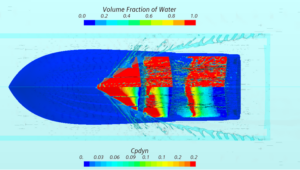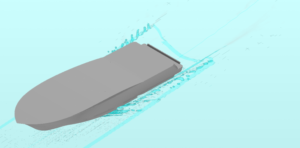News & Events

Since the founding of DLBA, we have always said that the design of high-speed boats requires the combination of rigorous science and a little bit of art. While a great designer relies on experience to understand the impact of the artistic decisions on a design, CFD allows the impacts of those artistic decisions to be quantified to ensure that the best possible vessel is delivered to our clients.

DLBA is doing just that with CFD simulations on a new double stepped planing hull for Scout Boats. From hump to maximum speed, stepped planing hulls exhibit complex hydrodynamic relationships that traditional tools for unstepped hulls fail to capture. When traditional tools fall short, we utilize CFD to provide performance predictions across the operating regime. However, it goes much further than that. With CFD, we can see in detail what is happening as the hull interacts with the water around it allowing a better understanding of why a hull is performing the way it does and informing the best possible design choices for the craft.

With the enhanced visualization provided by CFD, DLBA has been able to recommend tangible design modifications to improve performance. In the hands of an experienced Naval Architect, CFD allows invaluable insights into high-speed craft hydrodynamics, leading to reliable, concrete, and actionable design recommendations supported by data. This analysis allows the mitigation of previously unforeseen problems at the design stage rather than after construction and testing of the first vessel.

